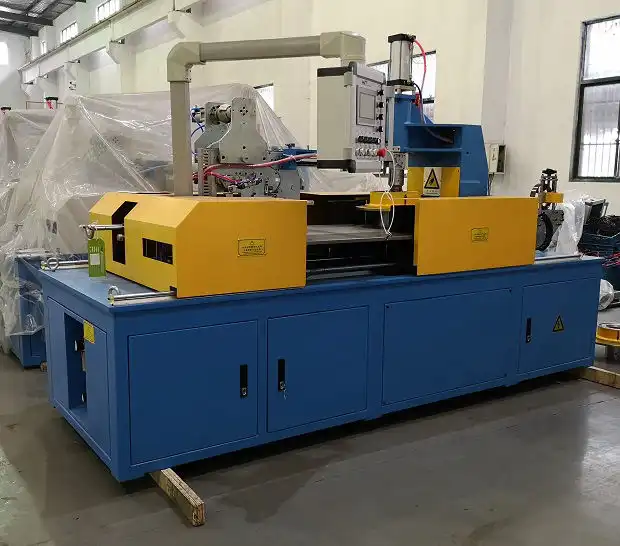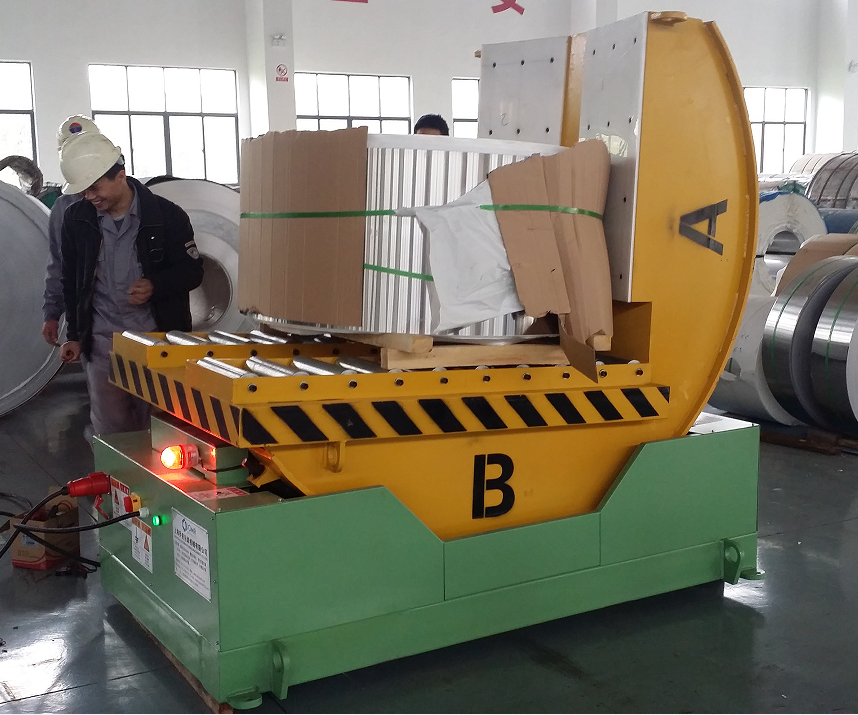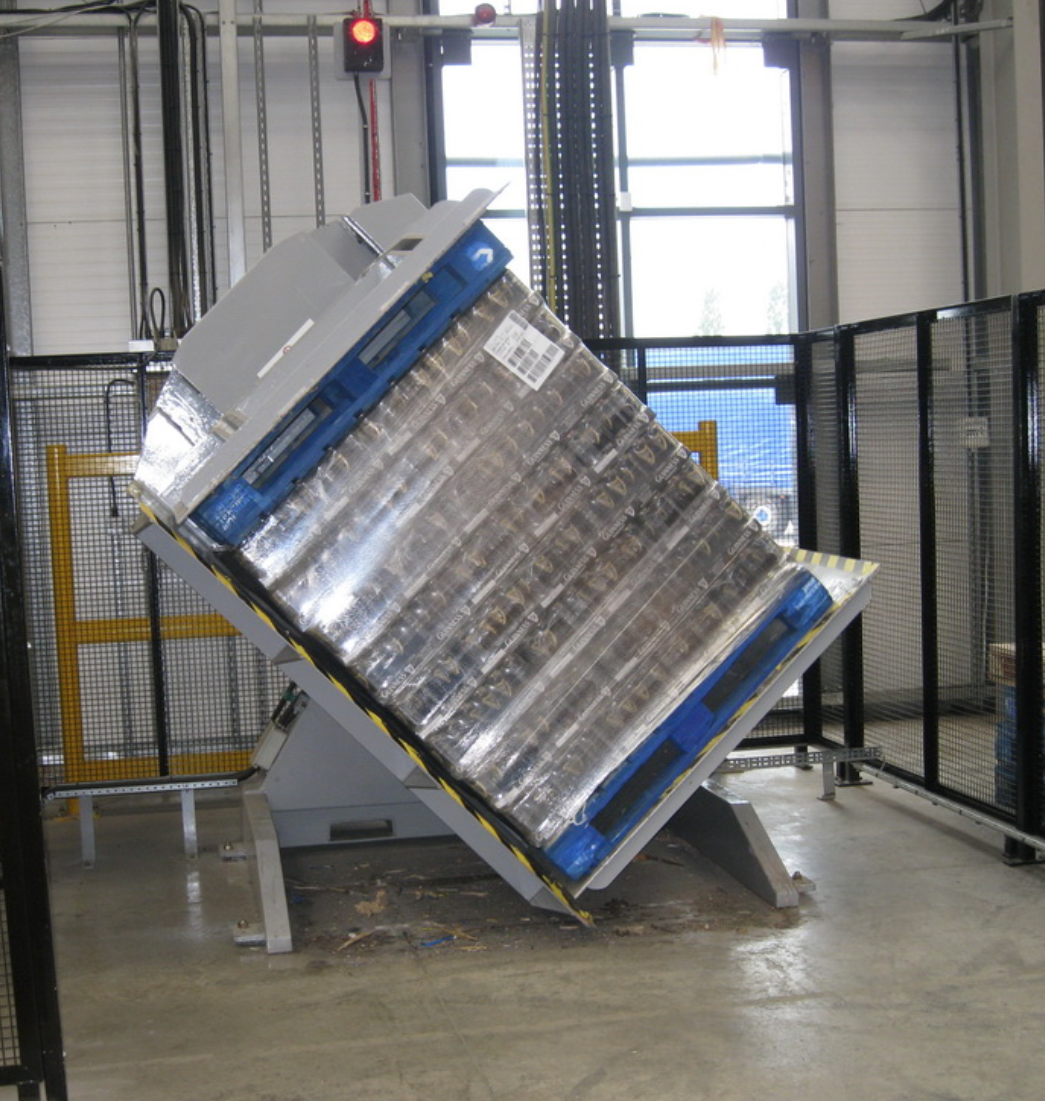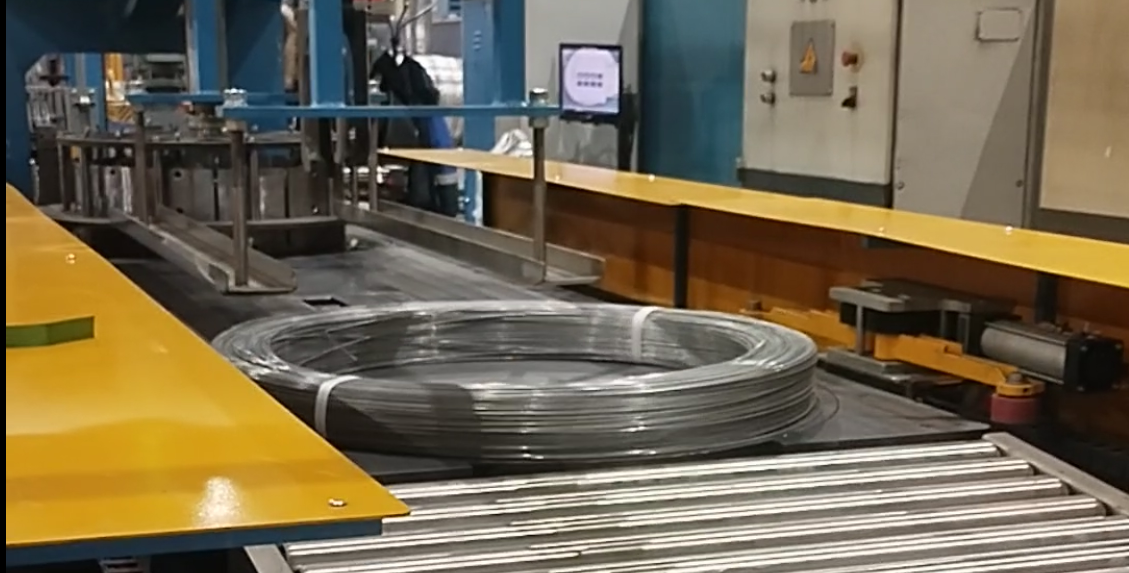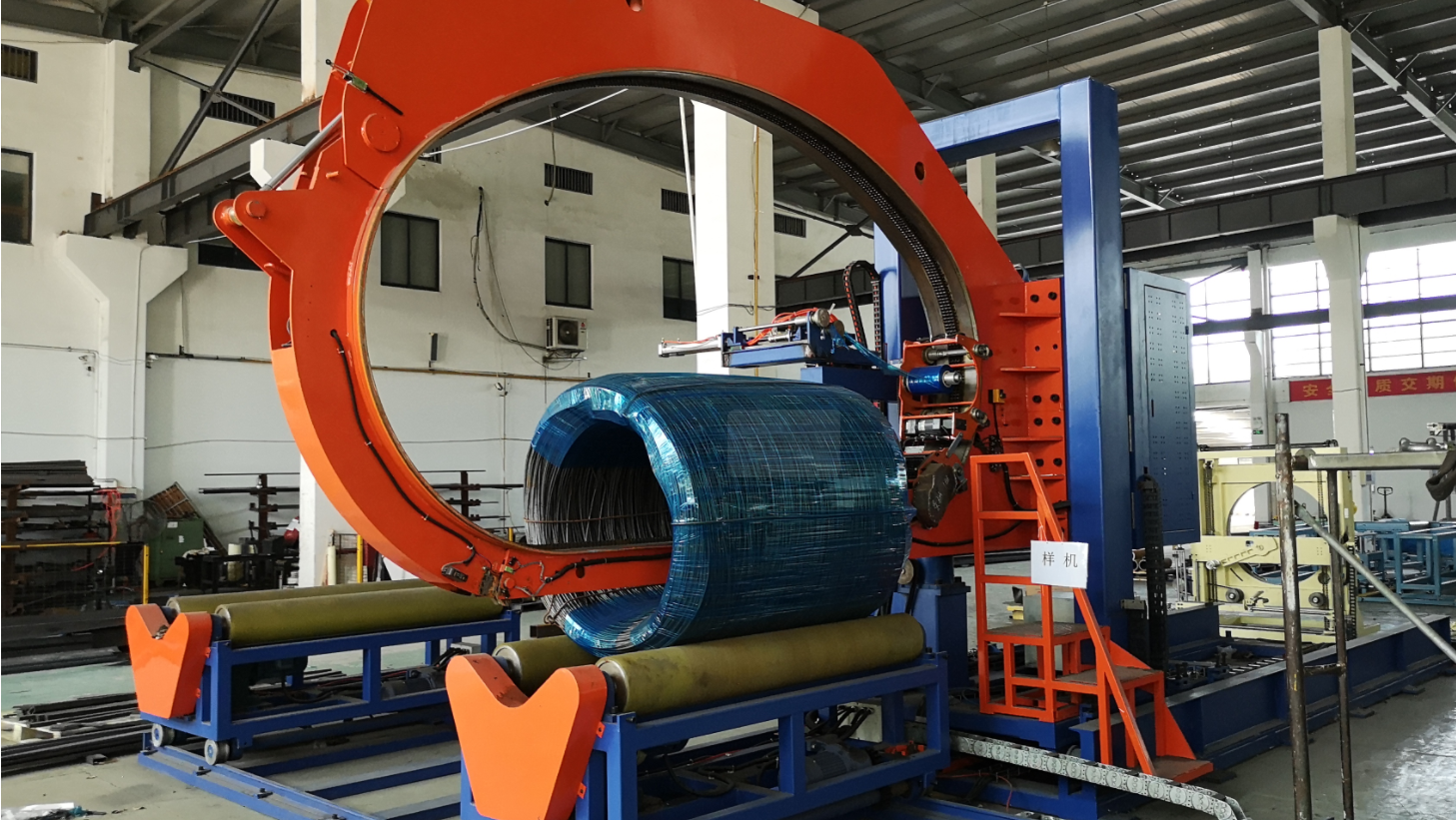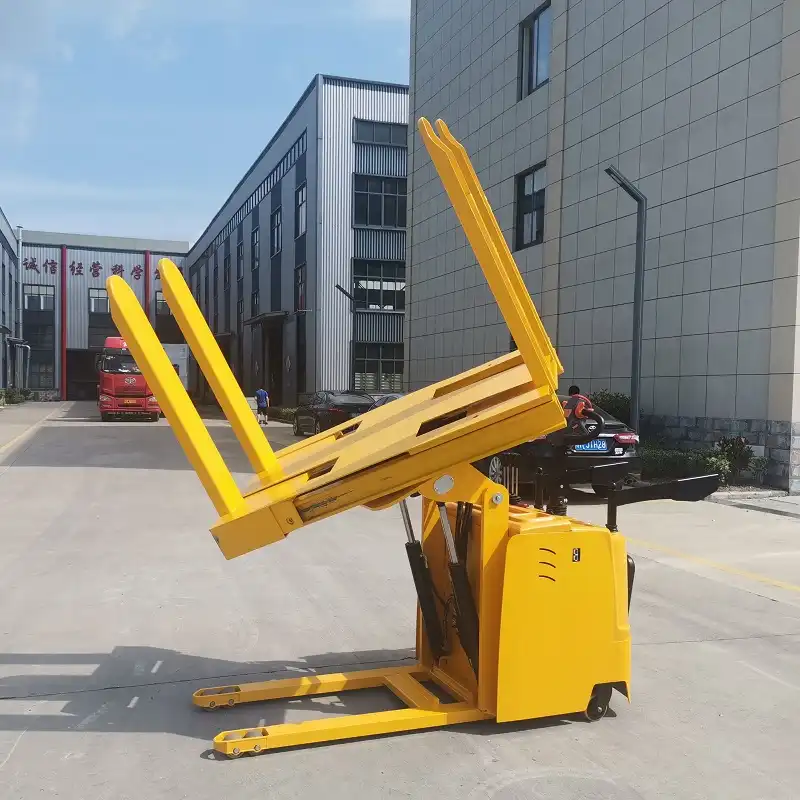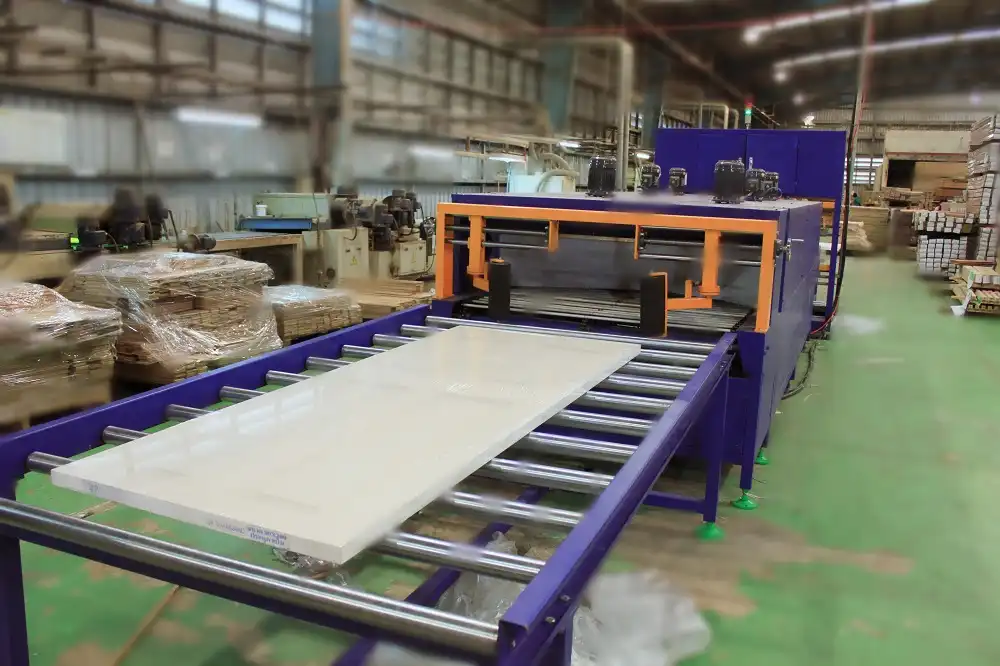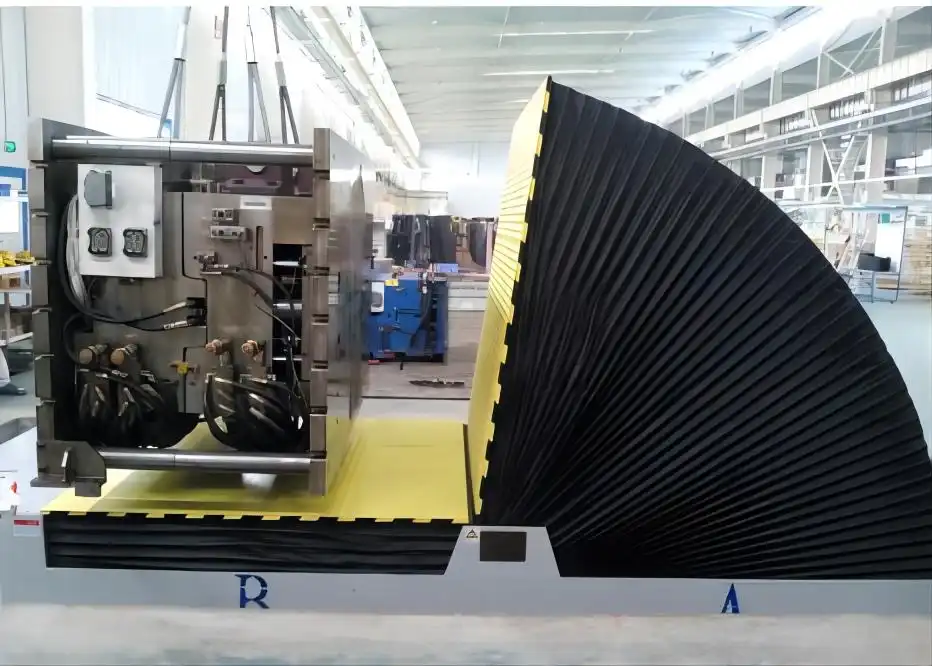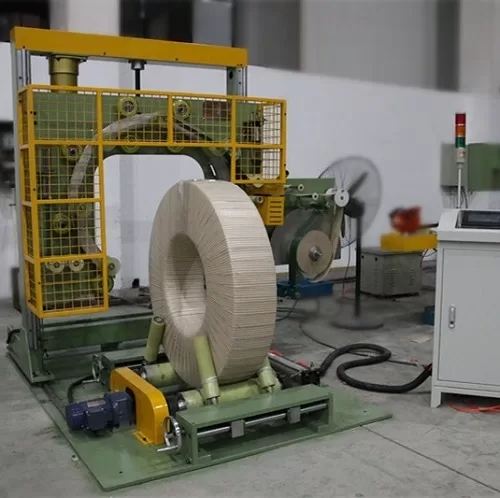The Impact of Proper Coil Wrapping on Corrosion Prevention
Are rust-damaged steel coils costing you time, money, and reputation? Corrosion is a relentless threat that silently erodes your valuable assets. Proper coil wrapping isn’t just packaging; it’s your vital defense line. Protect your investment and eliminate costly losses by mastering this essential process.
Proper coil wrapping is critical for preventing rust by creating a protective barrier against moisture, oxygen, and environmental pollutants. Utilizing advanced materials like VCI film enhances this defense, actively neutralizing corrosive elements and ensuring steel coils maintain their integrity during storage and transit.
Ignoring this crucial process is like leaving your assets exposed to the elements, inviting damage and loss. Let’s delve into why mastering the art of coil wrapping is essential for anyone dealing with metal coils, and how you can ensure your coils remain pristine from production to processing.
The Science Behind Rust and How Proper Wrapping Intervenes
Why does rust even occur? It seems like an inevitable enemy for metal, but understanding the mechanism can empower you to combat it effectively. Ignoring the science is like fighting in the dark, but with a little knowledge, you can illuminate the path to rust prevention.
Rust, or iron oxide, is the result of an electrochemical process known as corrosion, which occurs when iron or steel reacts with oxygen and moisture. For steel coils, often exposed to varying environmental conditions, this reaction accelerates. Proper coil wrapping is a critical intervention that isolates the steel from these corrosive elements by creating a physical barrier and, when using VCI technology, introducing active corrosion inhibitors that passivate the metal surface, preventing the electrochemical reaction needed for rust formation.
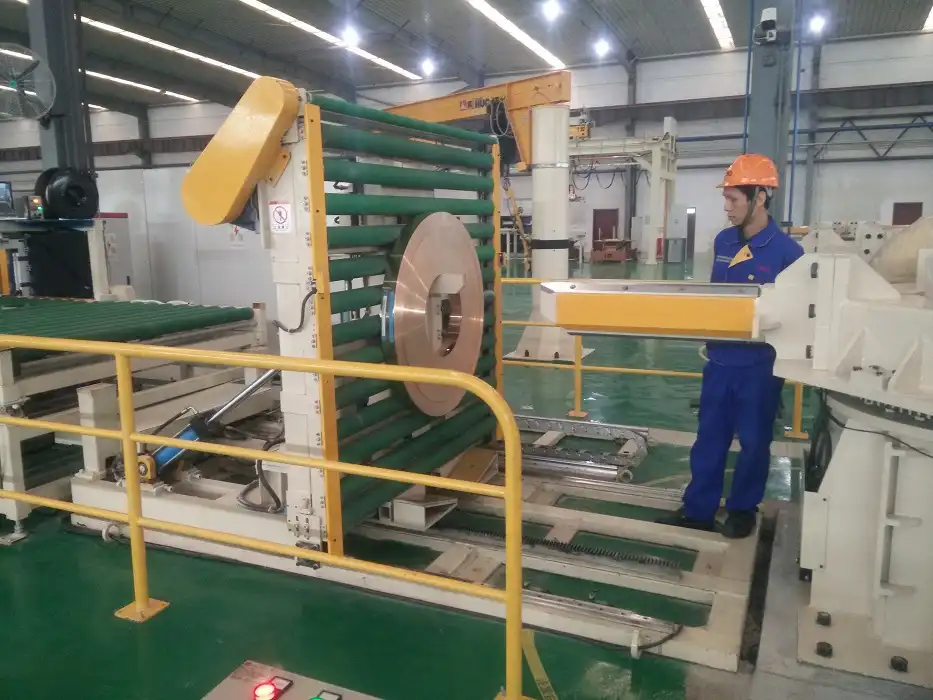
Understanding Electrochemical Corrosion
Corrosion is not merely a surface phenomenon; it’s an electrochemical reaction. This means it involves the transfer of electrons at an atomic level, facilitated by an electrolyte – in most cases, moisture.
| Component | Role in Corrosion |
|---|---|
| Anode | Area where metal loses electrons (oxidation occurs) |
| Cathode | Area where electrons are gained (reduction occurs) |
| Electrolyte | Conductive medium (e.g., water) allowing ion flow |
| Electron Path | The metal itself, allowing electrons to move from anode to cathode |
When steel is exposed to moisture and oxygen, different areas on the metal surface become anodes and cathodes. At the anode, iron atoms lose electrons and become iron ions, which then react with oxygen and water to form rust. The electrolyte, such as rainwater or humid air, allows ions to move between these anodic and cathodic sites, perpetuating the corrosion process. The presence of pollutants like sulfur dioxide or chlorides can accelerate this reaction by increasing the conductivity of the electrolyte.
How Proper Wrapping Disrupts Corrosion
Proper coil wrapping disrupts the corrosion process in several key ways:
- Moisture Barrier: The primary function is creating a physical barrier against moisture. By preventing water molecules from reaching the steel surface, we eliminate the crucial electrolyte needed for the electrochemical reaction. High-quality films and proper sealing techniques are vital for maintaining this barrier integrity.
- Oxygen Exclusion: While not completely airtight, effective wrapping minimizes the coil’s exposure to atmospheric oxygen, another crucial reactant in rust formation. Tightly wrapped, multi-layer film reduces air exchange significantly.
- Protection from Pollutants: Industrial and urban environments contain pollutants that accelerate corrosion. Wrapping provides a shield against these contaminants, preventing them from settling on the metal surface and initiating or accelerating corrosive reactions.
- Vapor Corrosion Inhibitors (VCI): This is where advanced wrapping materials like VCI film offer active protection. VCI compounds impregnated in the film slowly release vaporous molecules into the enclosed space. These molecules adsorb onto the metal surface, forming an invisible, passivating layer. This layer interferes with the electrochemical reactions at the anode and cathode sites, effectively preventing rust formation even in the presence of trace moisture or oxygen. VCI technology works in the vapor phase, protecting areas the film doesn’t directly touch, such as coil edges and inner diameters.
By understanding the science of corrosion, it becomes clear that proper coil wrapping is not just about aesthetics or load stability; it’s a fundamental step in safeguarding the structural and economic value of steel coils. The effectiveness of the wrapping directly correlates with its ability to maintain a dry, clean, and inhibited environment around the steel, actively disrupting the corrosion cycle at multiple points.
Choosing the Right Wrapping Materials for Optimal Protection
Choosing between wrapping materials can feel overwhelming. Are you sacrificing protection for cost, or vice versa? It’s a balancing act, but understanding your options empowers you to make informed decisions, ensuring your coils are wrapped in the best defense possible.
For robust rust prevention in steel coil wrapping, the choice of material is paramount. While standard stretch wrap provides a basic physical barrier against dust and handling damage, VCI film offers superior, active corrosion protection by releasing vapor-phase inhibitors that form a protective molecular layer on the metal surface, preventing rust even in challenging environments.

VCI Film vs. Standard Stretch Wrap: A Comparative Analysis
When it comes to preventing rust on metal coils, the material you wrap them in makes a significant difference. Standard stretch wrap, typically made from polyethylene, is a cost-effective solution primarily designed to unitize loads and provide a basic physical barrier. However, it offers limited protection against corrosion, especially in humid or changing environmental conditions.
VCI film, on the other hand, is engineered specifically for corrosion prevention. It’s a polyethylene film impregnated with chemical compounds that volatilize within the package, creating a protective atmosphere around the metal.
Here’s a comparison:
| Feature | VCI Film | Standard Stretch Wrap |
|---|---|---|
| Corrosion Inhibition | Active (VCI chemicals provide molecular protection) | Passive (Physical barrier only) |
| Moisture Barrier | Excellent | Good (depending on layers and quality) |
| Protection Duration | Long-term (can provide years of protection) | Short to medium-term (basic protection for months) |
| Cost | Higher initial cost | Lower initial cost |
| Application | Similar to stretch wrap | Easy to apply |
| Cleanliness | Leaves metal clean and dry (no residue) | No residue, but doesn’t prevent rust residue |
| Vapor Phase Action | Yes (protects non-contact areas) | No |
| Metal Specificity | Available in formulations for ferrous, non-ferrous, multi-metal | General purpose |
Advantages of VCI Film:
- Superior Rust Protection: VCIs provide active protection that reaches all metal surfaces within the package, including intricate parts and coil ends.
- Long-Term Storage: Ideal for coils requiring extended storage or long-distance transit through varying climates.
- Clean Protection: Eliminates the need for messy, oil-based rust preventatives and subsequent cleaning, streamlining downstream processing.
- Reduced Rework: Prevents rust from forming in the first place, minimizing costly cleaning, repair, or scrapping of damaged coils.
Disadvantages of VCI Film:
- Higher Upfront Cost: The initial material cost is greater than standard stretch wrap.
- Formulation Selection: Requires selecting the appropriate VCI formulation for the specific type of metal being protected.
Advantages of Standard Stretch Wrap:
- Economical: Lower cost makes it attractive for basic packaging needs.
- Load Stability: Excellent for securing loads and preventing shifting during transit.
- Basic Protection: Offers a physical barrier against dust, dirt, and minor abrasion.
Disadvantages of Standard Stretch Wrap:
- Ineffective Against Rust: Does not actively inhibit corrosion. If moisture enters the package, rust can readily form.
- Condensation Risk: Can trap moisture or condensation, potentially accelerating corrosion if no VCI is present.
For reliable, long-term rust prevention, especially for valuable metal coils that will be stored or shipped, VCI film is the demonstrably superior choice. The investment in VCI technology translates directly into reduced losses from rust damage, eliminating rework and ensuring product quality, which far outweighs the higher material cost compared to standard stretch wrap.
Mastering Coil Wrapping Techniques for VCI Effectiveness
Simply having the right materials isn’t enough; technique is equally crucial. Are you wrapping for security or true protection? Effective coil wrapping with VCI film is an art and a science, ensuring that the protective properties are fully leveraged. Mastering the technique is like learning the secret handshake to rust prevention.
Mastering proper coil wrapping techniques with VCI film is essential because it ensures complete encapsulation of the coil, effectively containing the VCI vapors and creating a consistent protective atmosphere around all metal surfaces, thereby maximizing the film’s ability to prevent rust and maintain coil integrity.

Essential Steps for Effective VCI Coil Wrapping
Poor wrapping technique can severely undermine the benefits of even the best VCI film, leaving your coils vulnerable to corrosion. To ensure maximum protection, a systematic approach is necessary, focusing on complete coverage and proper VCI concentration within the package.
Here’s a guide to effective VCI coil wrapping:
| Step | Action | Detail | Rationale |
|---|---|---|---|
| 1: Preparation | Ensure the coil is clean and dry | Coil must be free from dirt, grease, processing fluids (unless VCI compatible), and fingerprints. Use clean gloves when handling. | Contaminants can trap moisture, harbor corrosive agents, and block VCI molecules from adsorbing onto the metal surface, rendering the VCI ineffective. Clean surfaces are paramount. |
| 2: VCI Selection | Choose the correct VCI film | Select the appropriate VCI formulation (ferrous, non-ferrous, or multi-metal) based on the type(s) of metal in the coil. Consider film gauge and barrier properties for application and protection duration. | Using the wrong VCI type may not provide adequate protection and could potentially harm certain metals. Matching the VCI to the metal ensures optimal passivation. |
| 3: Initial Wrap | Apply the first layer tightly | Begin wrapping the coil tightly with the VCI film, overlapping each layer by at least 50%. Maintain consistent tension. | Overlapping creates a robust, multi-layer barrier that minimizes moisture ingress and VCI escape. Consistent tension ensures the film conforms tightly to the coil’s shape. |
| 4: End & Edge Focus | Provide extra protection for vulnerable areas | Pay special attention to the coil’s ends and edges. Apply additional layers of VCI film to these areas, folding and tucking securely. | Ends and edges have exposed surfaces that are highly susceptible to physical damage and moisture penetration. Extra coverage here reinforces the most vulnerable points. |
| 5: Encapsulation | Fully enclose the coil | Continue wrapping until the entire coil is completely encapsulated with no visible gaps or openings. Ensure the inner and outer diameters are sealed. | Complete encapsulation is vital to create and maintain the necessary VCI vapor concentration within the package. It also forms a continuous physical barrier. |
| 6: Secure Wrap | Fasten the film ends | Use VCI-compatible tape or banding to securely fasten the loose ends of the VCI film. Avoid puncturing or damaging the film. | Securing the wrap prevents it from unwrapping during handling, storage, and transit, maintaining the integrity of the protective atmosphere and physical barrier. |
| 7: Inspection | Check for integrity | Visually inspect the wrapped coil for any tears, punctures, or areas where the seal is compromised. Re-wrap or patch as needed. | Identifying and fixing any breaches is crucial, as even small openings can allow moisture and pollutants in and VCI vapors to escape, compromising protection. |
| 8: Storage | Store appropriately | Store wrapped coils in a cool, dry indoor environment whenever possible. Avoid direct sunlight and extreme temperature swings. | While VCI film provides significant protection, optimal storage conditions minimize stress on the packaging and further extend the VCI’s effectiveness and lifespan. |
Best Practices:
- Sufficient VCI: Don’t under-wrap. Use enough film to ensure adequate VCI chemical concentration and complete coverage. A general rule of thumb is using at least 1 square foot of VCI material for every 1-3 square feet of metal surface or 1 cubic foot of void space.
- Tension Control: Too little tension results in a loose, ineffective barrier. Too much tension can damage the film or coil edges. Use appropriate wrapping equipment settings.
- Seal Quality: Ensure overlaps cling well or are sealed with VCI-compatible tape to prevent vapor loss and moisture ingress.
- Personnel Training: Properly train all personnel involved in the wrapping process on the importance of VCI and the correct techniques.
- Consider Coil Covers: For coils requiring frequent access or in dynamic environments, pre-formed VCI coil covers with elastic edges offer a convenient and reusable option for protecting coil ends.
Adhering to these steps and best practices ensures that your VCI coil wrapping investment provides the maximum possible rust prevention, safeguarding your valuable steel coils effectively throughout their journey.
Beyond the Wrap: A Holistic Approach to Rust Prevention
Wrapping is a powerful tool, but it’s just one piece of the puzzle. Are you overlooking other factors that could sabotage your wrapping efforts? True rust prevention is a holistic strategy, extending beyond just wrapping. It’s about creating an ecosystem of protection, where wrapping is a key component, but not the only one.
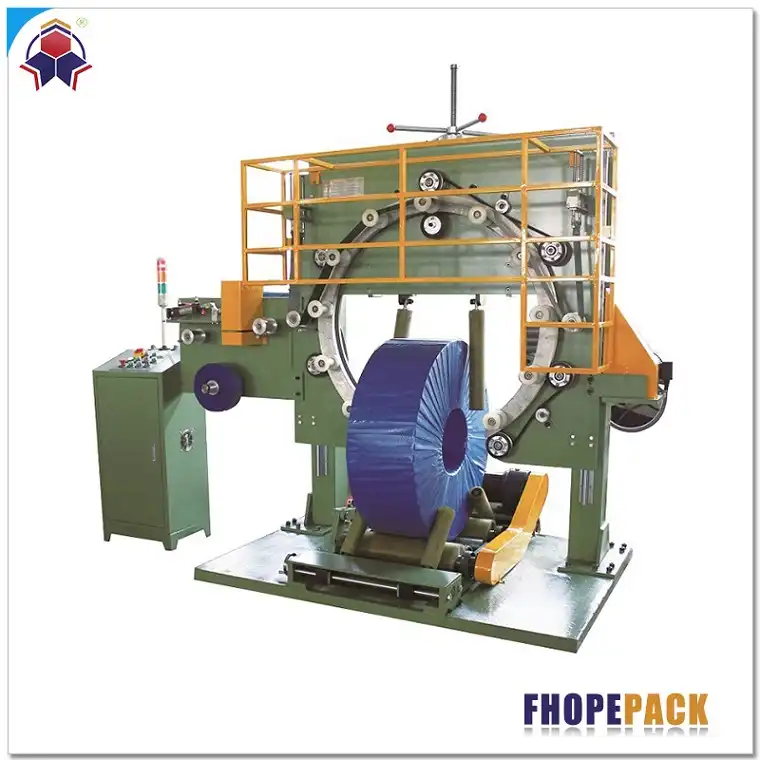
Proper coil wrapping, while vital, is part of a holistic rust prevention strategy that includes clean handling, controlled storage environments, using clean and appropriate fluids, maintaining correct pH and temperature, and avoiding corrosive contaminants. This integrated approach maximizes protection and minimizes costly rust damage throughout the supply chain.
Implementing a comprehensive rust prevention plan means addressing potential corrosion points throughout your entire process, from manufacturing to final delivery. Relying solely on wrapping, even with VCI, can leave you vulnerable to other factors that accelerate corrosion. Consider these supplementary strategies:
- Clean Handling: Human hands contain oils and acids that can initiate corrosion, especially on clean metal surfaces. Always wear clean, non-abrasive gloves when handling coils or parts prior to wrapping.
- Cleanliness of Parts: Ensure parts are clean and free from contaminants like dirt, metalworking fluids (unless compatible), salts, or residues from cleaning processes before wrapping. These can trap moisture or react directly with the metal.
- Controlled Environment: Store coils in cool, dry areas with stable temperatures. High humidity and temperature fluctuations can lead to condensation, providing the electrolyte needed for rust. While VCI helps mitigate this within the package, a controlled external environment supports its effectiveness.
- Avoid Corrosive Contact: Do not allow direct contact between metal coils and materials known to contain moisture, acids, or chlorides, such as untreated wood pallets or corrugated cardboard. Use VCI paper or poly liners as a barrier.
- Fluid Management: If cleaning or processing fluids are used, ensure they are properly maintained (clean, correct concentration) and that parts are thoroughly dried afterwards. Use deionized or distilled water if possible, as public water can contain rust-causing chemicals.
- pH Control: Maintain appropriate pH levels in cleaning solutions and metalworking fluids. Incorrect pH can either directly corrode metals or prevent rust inhibitors from working correctly. For ferrous metals, a pH above 9.0 is often recommended, while non-ferrous metals require a more neutral range (7.0-7.5).
- Year-Round Protection: Don’t limit VCI use to just humid months. Temperature changes during transit or storage, even in winter, can cause condensation. Consistent VCI use provides protection regardless of external conditions.
- Alternative & Supplementary Products: For areas difficult to wrap or for supplementary protection, consider VCI emitters, foams, or liquids like water-based rust preventatives (e.g., Dry Coat) or rust removers (e.g., Metal Rescue) as part of a complete corrosion management system.
- Personnel Training: Educate your team on the "Dirty Dozen" common mistakes and the importance of each step in the rust prevention process.
By integrating proper steel coil wrapping with these broader strategies, you create a robust defense system that minimizes the risk of rust damage, ensuring your metal coils arrive and remain in pristine condition, protecting your quality reputation and bottom line.
Conclusion
Protecting your valuable steel coils from rust is non-negotiable, and proper coil wrapping is a cornerstone of this defense. By understanding the science of corrosion, choosing advanced materials like VCI film over standard stretch wrap, mastering wrapping techniques, and implementing holistic prevention strategies, you can significantly reduce or eliminate rust-related losses. Investing in proper steel coil wrapping and a comprehensive corrosion control plan safeguards product quality, enhances customer satisfaction, and delivers substantial long-term cost savings.

